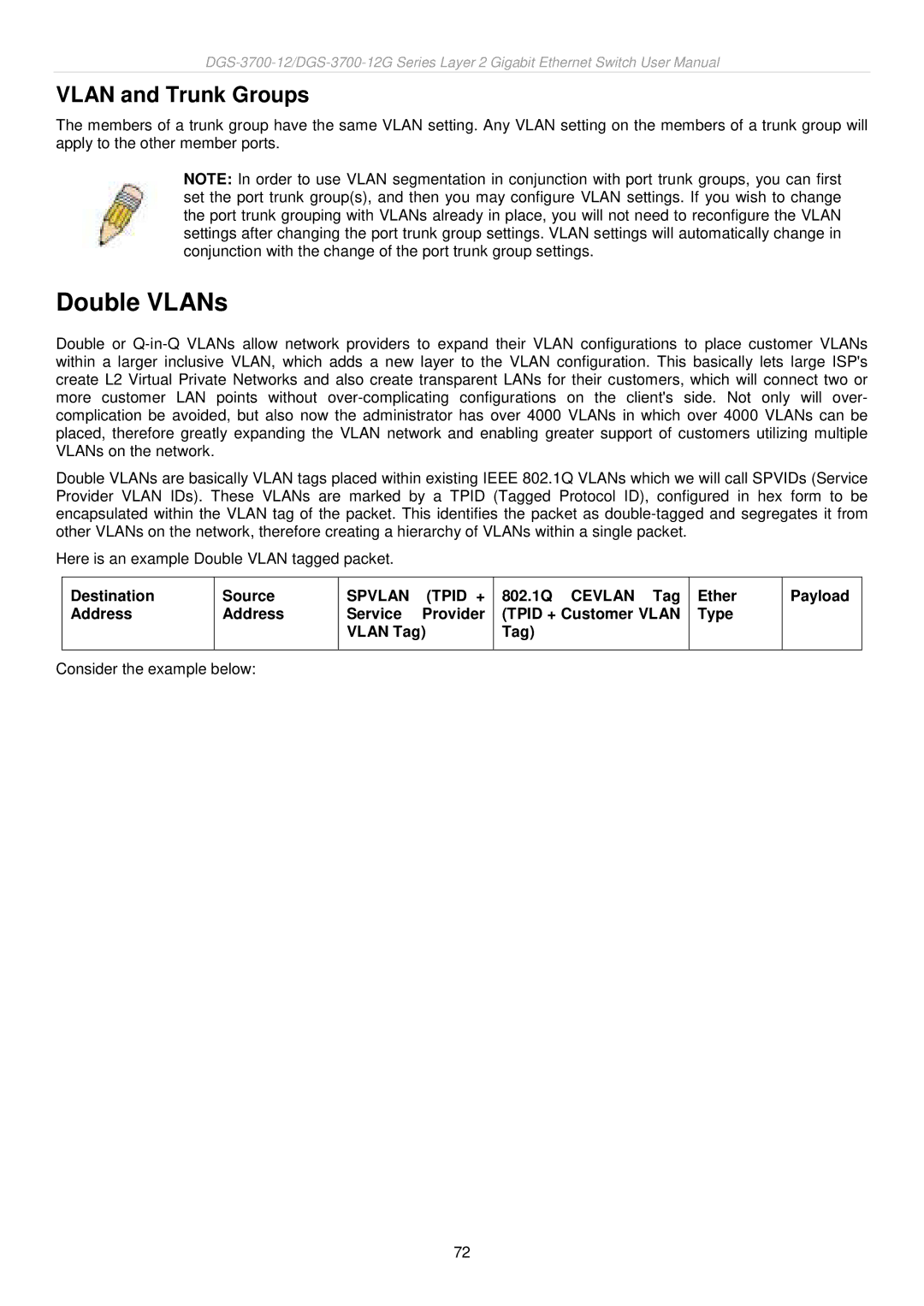
VLAN and Trunk Groups
The members of a trunk group have the same VLAN setting. Any VLAN setting on the members of a trunk group will apply to the other member ports.
NOTE: In order to use VLAN segmentation in conjunction with port trunk groups, you can first set the port trunk group(s), and then you may configure VLAN settings. If you wish to change the port trunk grouping with VLANs already in place, you will not need to reconfigure the VLAN settings after changing the port trunk group settings. VLAN settings will automatically change in conjunction with the change of the port trunk group settings.
Double VLANs
Double or
Double VLANs are basically VLAN tags placed within existing IEEE 802.1Q VLANs which we will call SPVIDs (Service Provider VLAN IDs). These VLANs are marked by a TPID (Tagged Protocol ID), configured in hex form to be encapsulated within the VLAN tag of the packet. This identifies the packet as
Here is an example Double VLAN tagged packet.
Destination | Source | SPVLAN | (TPID + | 802.1Q CEVLAN Tag | Ether | Payload |
Address | Address | Service | Provider | (TPID + Customer VLAN | Type |
|
|
| VLAN Tag) | Tag) |
|
| |
|
|
|
|
|
|
|
Consider the example below:
72
